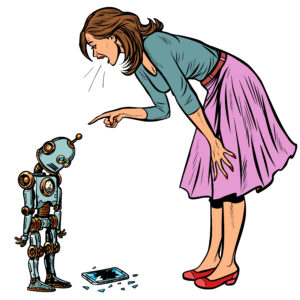If your site is properly optimized, you will undoubtedly receive many visitors. Thousands of them are spam bots crawling all over your web pages. These automated bots can be helpful sometimes, but bad bots can cause many problems. They can, in particular, wreak havoc on your advertising campaigns. But don’t despair. You can learn how to block bots and keep them from interfering with your ad campaigns. So, how do you stop bots from stealing traffic and jeopardizing your company’s budget and security? Here are three ways to limit traffic from malicious bots.
Techniques for limiting Ad Bots

3rd party verification Moat – Double Verify – IAS.
The Association of National Advertisers (ANA) estimates global fraud cost $5.8 billion in ad spending in 2019. As the scope and sophistication of invalid traffic (IVT) and ad fraud grows, advertisers and agencies are finding it increasingly difficult to ensure that their ad dollars are being spent on their intended audiences—that is, real people looking for products or services. According to recent studies, bots and fake users cost the economy $42 billion in revenue each year. These three technologies, IAS, Double Verify, and Moat, provide users with the highest level of campaign security across all media channels. They ensure that every ad impression is validated and delivered on high-quality, fraud-free inventory sources.
Blacklisting to turn off known offenders.
Companies that want to empower their brands must invest in advertising. Businesses are increasingly looking for online alternatives, and tech behemoths like Google, Facebook, and Bing are happy to help.
However, there is a major issue! While internet bots account for more than half of all ad views, they are still counted as impressions and billed to unsuspecting businesses. As a result, it is necessary to create a bot blacklist that will aid in cleaning up online advertising.
Another, more severe issue is that “a massive chunk of the advertising market is based on smoke and mirrors, or even outright fraud,” according to Fortune. It can occur due to pixel stuffing when ads are crammed into small spaces. Ad stacking occurs when multiple ads are displayed layered one on top of the other. Some businesses use humans to click on ads and record impressions, while many others take the much faster route of using bots programmed to scroll and click through websites in the same way that normal consumers do.
The result? Companies need to find out whether the ads they’re paying for are getting noticed and driving sales or if they’re being duped. A blacklist of bad IP addresses culled from Google, Facebook, Bing, and other well-known advertising platforms is available. While it’s rare for tech titans to agree on anything, they now share a common goal: if robot IP traffic dominates their data centers and drives down the value of ads, buyers will look elsewhere for human attention.
With Google earning more than $50 billion in ad revenue, resolving this issue is a top priority. There is already a significant margin of error to correct, with 8.9 percent of all clicks blacklisted. And, with robots accounting for roughly 60 percent of all Internet traffic and being routed through corporate data centers, there are additional benefits to resolving this issue: fewer bots equals improved network performance.
Find a trusted partner like an agency that monitors both using technology and real-person optimization.
According to an Incapsula study, 61.5 percent of all traffic is from non-human bots. While the numbers vary from study to study, the advertising and publishing industries generally agree that fraudulent bot traffic is a serious problem. As a result of this problem, several companies are working to combat bots by taking different approaches.
Agencies can help with their team of experts who are using best-in-class tools/methodologies to detect bot traffic. A typical bot detection or prevention tool employs predictive analysis of existing data on bot activity and behavior. Some detection systems track traffic in real-time. These tools will help distinguish human actions from bots, so you don’t lose money.
Final thoughts
So, those are three ways to limit ad bots on your site. It’s essential to remember that there is no foolproof way to stop them all, but using these methods should help reduce the number of bots hitting your pages and costing you money. If you’re looking for more tips or want someone to help monitor your traffic and ensure it’s clean of ad bots, be sure to reach out. We’d be happy to help!

